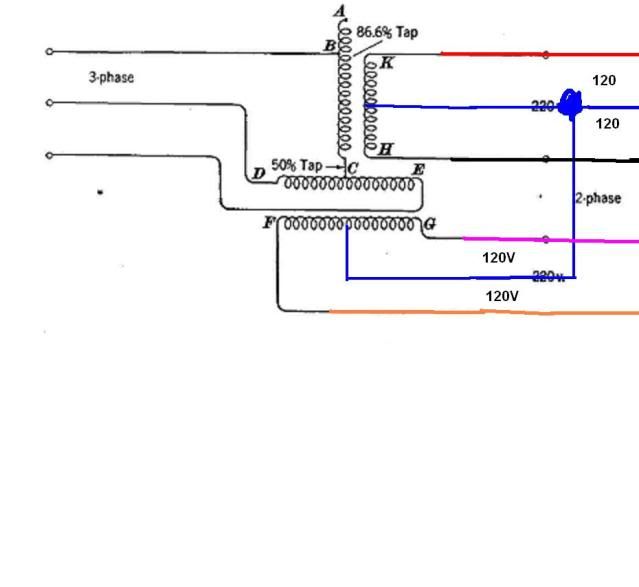Joethemechanic? your delta-connected xfmr illustration appears to provide two voltages in quadrature, sort of a quasi-Tee, but it won?t solve conmgt?s problem. Following is an explanation, but bear with me? it?s like defining what a ratchet is without using your hands!
For discussion purposes say the motor?s X-winding is connected to the horizontal-winding of the delta- xfmr. Representing Vxx?, its magnitude is equal to the xfmr?s full phase-voltage, say E.
Then say the motor?s Y-winding is connected to the mid-phase, what many call the ?High-Leg? (also known as Red-Leg, Bitch-Leg, Stinger-Leg,? etc!) Representing Vyy?, its magnitude is 0.866 x E!
It is obvious that the voltages are not equal in magnitude! More importantly, the connection of the vertical source represents still another problem, that is, the real displacement is not 90⁰! This results from the fact that the actual vector (or phasor) has as its real-part, 0.500 x E and as its quadrature-part, 0.866 x E, yielding as a vector E x (0.5 + j0.866) or 1.37∢49⁰!
In closing, using a delta-connected source with access to a mid-phase does not solve conmgt?s problem because: a) the motor is 2-ph, 4-winding, not a 2-ph, 3-winding machine; b) the two voltages are not equal in magnitude; and c) the sources are not displaced by 90⁰!
Conmgt? further to your multiplying-factor question. In any 2-ph, 3-wire circuit, the common (or neutral) conductor will carry the SQRT [phase X? plus phase Y?.]! Thus, if your machine were 2-ph, 3-wire, 240 V, 44 A, then the common wire will carry 62.2 A!
Regards, Phil


